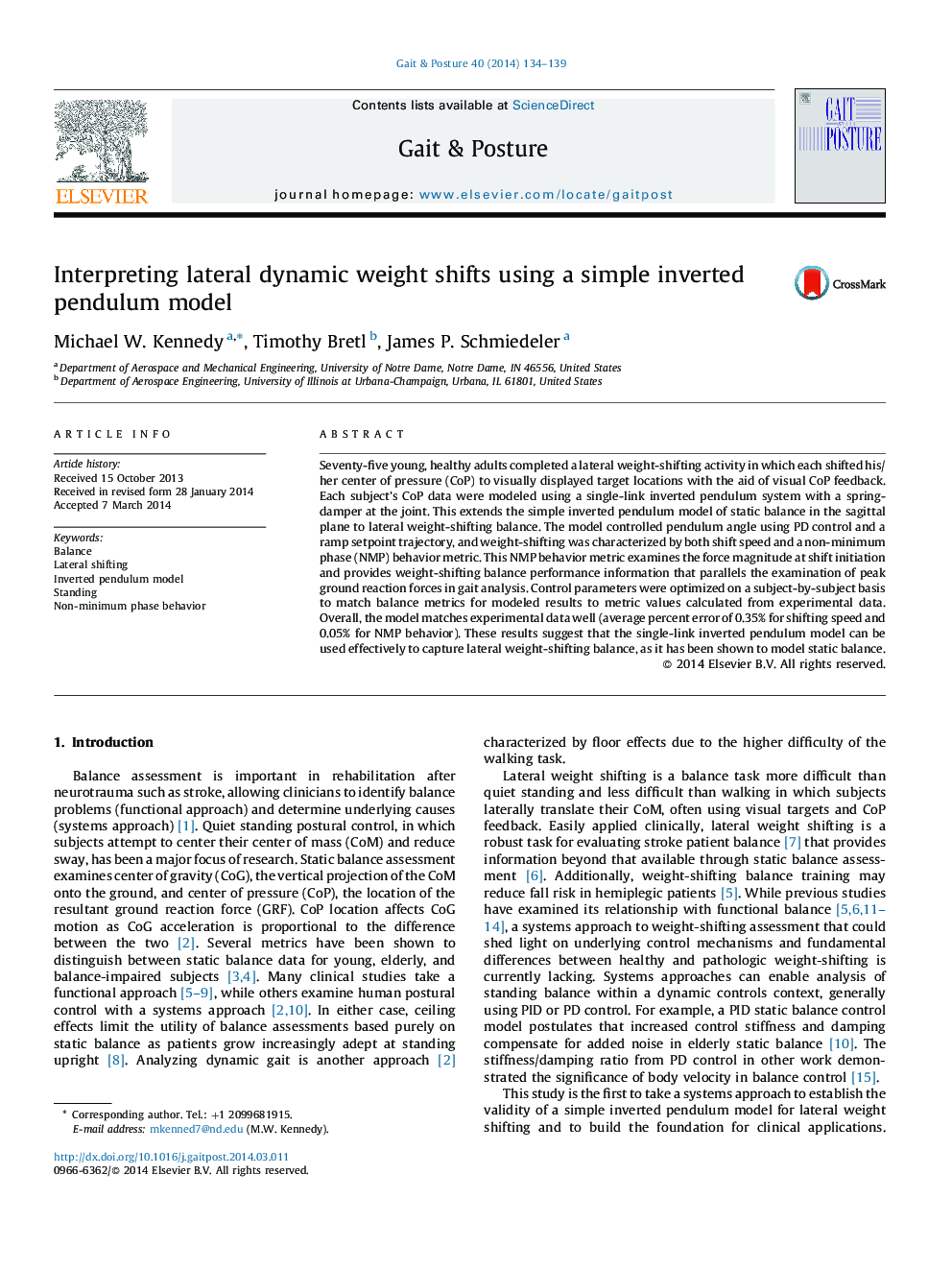| Article ID | Journal | Published Year | Pages | File Type |
|---|---|---|---|---|
| 6206471 | Gait & Posture | 2014 | 6 Pages |
â¢We model young, healthy lateral weight-shifting with an inverted pendulum model.â¢We introduce a non-minimum phase (NMP) metric for weight shifting.â¢Modeled and experimental data compared using NMP and shift time metrics.â¢Control parameters obtained from optimization of model-experimental data matching.â¢Single-link inverted pendulum model captured balance well overall.
Seventy-five young, healthy adults completed a lateral weight-shifting activity in which each shifted his/her center of pressure (CoP) to visually displayed target locations with the aid of visual CoP feedback. Each subject's CoP data were modeled using a single-link inverted pendulum system with a spring-damper at the joint. This extends the simple inverted pendulum model of static balance in the sagittal plane to lateral weight-shifting balance. The model controlled pendulum angle using PD control and a ramp setpoint trajectory, and weight-shifting was characterized by both shift speed and a non-minimum phase (NMP) behavior metric. This NMP behavior metric examines the force magnitude at shift initiation and provides weight-shifting balance performance information that parallels the examination of peak ground reaction forces in gait analysis. Control parameters were optimized on a subject-by-subject basis to match balance metrics for modeled results to metric values calculated from experimental data. Overall, the model matches experimental data well (average percent error of 0.35% for shifting speed and 0.05% for NMP behavior). These results suggest that the single-link inverted pendulum model can be used effectively to capture lateral weight-shifting balance, as it has been shown to model static balance.
